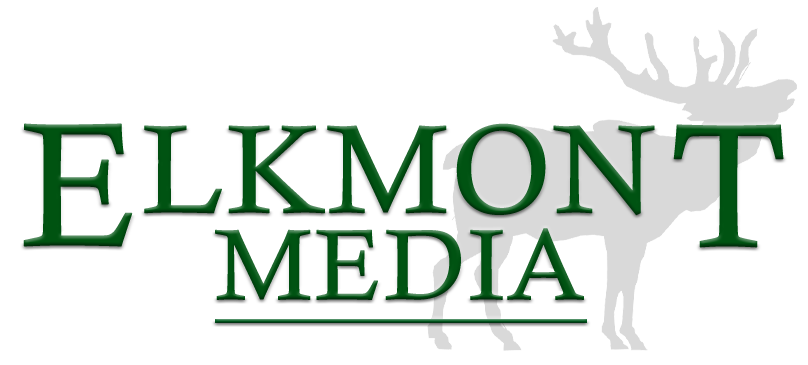After investing a bunch of time in learning the basics, all too often the rug gets pulled out from underneath your feet. The tactics you’d just started looking into may be ineffective a few weeks or months later thanks to Google’s constant rollout of algorithm updates.
For example, building multiple boilerplate-style pages for specific keyword variants used to be incredibly effective. There was also the rampant use of partial and exact match domains. The list goes on.
But OK Ok. I’ll give you the benefit of the doubt. If you’re here looking for SEO tips and tricks, you probably haven’t been on the razor’s edge of SEO. That’s a good thing. You can learn from our experience and over 10 years of data collection!
Now that 2018 is well underway, it’s time to review your SEO strategy and take a look at what works, and what doesn’t. Here are some essential SEO tips and tricks for 2018!
1. Find the Right Keywords
One tactic that hasn’t changed much over the years, is keyword research.
It’s an important prerequisite for success in link building, on-page SEO, and content marketing.
An effective keyword targeting strategy is the backbone of every SEO campaign. Remember, keywords determine the niche relevance and visibility of your site in specific search terms. Honestly, if you’re doing any SEO activity and don’t have some target keywords in mind, you’re wasting time.
Knowing how to pick the best keywords does take a bit of effort. But it’s not rocket science. We’ll cover the basics below. If you want a complete guide, we’ve got one for you here.
As always, the Google AdWords Keyword Planner is an excellent (and completely free) tool for keyword research. You only need a valid Google account to get started right away.

A word of advice: be sure to find the balance between keyword competitiveness and demand.
Like I said before, this isn’t rocket science. Most of the time, high demand keywords will be harder to rank for. So unless you’ve got a big appetite (and deep pockets), avoid the most competitive phrases.
Instead, be on the lookout for medium volume keywords that have a low competitive index.
While you’re at it, make sure you consider searcher intent. Although broad keywords may receive tons of monthly searches, that doesn’t necessarily mean that searchers are looking to buy a product or service.
Sometimes, broad terms are used by searchers just to show images, or to find wikipedia listings.
Here are a few ways to refine your keyword search:
- Incite Action – To target potential customers, add action-oriented phrases like “for sale” or “for rent”.
- Mention Your Location – You can also narrow down your keyword search by being more location-specific.
- Add More Context – Whenever possible, focus on long-tail SEO keywordsthat ensure more targeted traffic.
2. Don’t Skimp on On-Page SEO Efforts
Another tactic that’s actually still tried and true, is on-page optimization. Cut corners on this one, and you’ll definitely find ranking improvements hard to come by.
For the most part, SEO experts agree that mentioning a keyword 2-4 times in the content is a good idea.
Keep in mind, keyword stuffing is bad. Don’t bother doing it. You don’t want your keyword use to disrupt the reader’s experience in any way.
So just focus on a natural writing style that incorporates your targeted keywords where appropriate. If you have trouble with this, try reading your writing back to yourself, out loud.
You might get some sideways glances if you’re at a coffee shop, but hey, no one said this was going to be easy.
You’ll also want to ensure that your keywords are in a couple of key elements. Namely
- Page title
- Page meta description
- URL
- H1 or H2
Not only do some of these matter to Google’s algorithm, but some can also improve click-through rates and ultimately, conversions!
If you use WordPress, the easiest way to modify meta descriptions and page titles is through Yoast SEO. It provides a visual editor for your page’s snippet.

3. Optimize Your Images
Speaking of keyword optimization, one oft-overlooked tip is to optimize your images for them as well. This is certainly still the case in 2018. Users are as drawn to visual content as ever!
It may sound intimidating at first, but it’s honestly really easy. You simply have to modify the image’s filename and ALT tag — that’s it.
At this point, it’s safe to assume that you already know how to change an image’s filename. But when it comes to the ALT tag, the process depends on the website platform you use.
With WordPress, for example, you can modify the “alternative text” attribute in the image details. This is accessible from the media library or straight from the post editor.

For the sake of user experience, it’s also a good idea to compress your images before uploading them to your site. And for this job, you should use a lossless compression tool like Compressor.io.

4. Boost Your Backlink Profile
Ok, so we covered a few quick tips for on-page optimization, keyword selection, and images. But what about off-page SEO?
Well, that’s a whole new ballgame! But at its most basic level, it begins and ends with your backlink profile.
Earning the right backlinks will help your website rise to the top of organic search! In 2018, it’s important to look at your link acquisition efforts as link-earning as opposed to link-building. There’s not necessarily any difference other than the sentiment implied.
In years gone by, link-building got pretty cynical. It involved scrapers, quality over quantity, and sometimes even paid links.
These days, those tactics are at best ineffective. At worst, they’ll get you slapped down with a Google penalty. So don’t listen to the hucksters selling cheap links!
Keep in mind that engines utilize your backlink profile to determine authority, relevance, and overall rank worthiness. Backlinks from other popular sources also signal trust, which is another deciding factor in SEO. That’s why link building will inevitably become your bread and butter for the long-term.
To cut to the chase, here are a few quick tips that will help boost your website’s backlink profile.
- Reclaim Lost Links – If you updated a page’s URL or removed it altogether, then you could have a few broken or lost links. Tools like Monitor Backlinks and Ahrefs can help you detect and recover them by contacting the link’s source.
- Contribute content to relevant outlets – Now, don’t go at this willy-nilly. Guest posting like you might have tried in 2014 is largely a waste of time. But partnering and working with editors at relevant outlets is still a great way to build brand exposure and earn some links.
- Offer business partners special discounts – Passing along a special offer to a business partner can be a great way to earn a link and get some referrals. You can even provide kickbacks if it’s appropriate!
- Develop Skyscraper Content – When executed properly, the Skyscraper Technique could be your ticket to more authoritative backlinks. In a nutshell, you need to find popular content, rewrite something more valuable, and then share it with influencers.
5. Track Your Data
Noticing a pattern? I’m dubbing 2018 the year of common sense.
All of the spammy tactics of years gone by? Forget about them. Move on.
All of the common sense advice you’ve been given since day one? Pay attention and put it to work.
It should come as no surprise that without tracking the right data, you’re not going to be able to learn much about your SEO efforts. After all, how would you even know if one approach worked, if you didn’t know what improvements to look for in the analytics?
Adaptability is perhaps the most important trait for SEO success. After all, you can’t design an optimal, self-sustaining SEO strategy overnight. If you want to grow and rank highly in search engines, you need to learn how to measure results.
Tracking your backlink profile is a step in the right direction, but it’s barely enough. You should also monitor other key performance indicators, such as web traffic, click-through rate, and search rankings. Only then will you be able to make data-driven decisions moving forward.
Apart from backlink checkers, some of the SEO tools that can help you with analytics are:
- Google Analytics – Helpful for tracking raw site data, such as traffic sources, bounce rate, and session duration.
- Moz Pro – A complete suite of tools for tracking search engine rankings as well as keywords.
- SEO Analyzer by Neil Patel – A free-to-use tool that can provide you with quick insights regarding your website’s SEO.
- Google Search Console – This is your one stop shop for all things SEO data. Be sure to set this up as early as you get around to Google Analytics.
Conclusion
SEO tips and tricks are a dime a dozen. You’ve probably seen (and turned away from) articles that include 100+ tips for higher rankings.
2018 however, is not going to be a year where shortcuts are effective. Rather, we want to play the long game.
The tips and tricks laid out above, are going to take time and energy to implement. But they’re also tactics that are here to stay.
Remember, search engine optimization and improving user experience have a lot in common these days.
Keyword research, for example, makes sure users who need your content can find it. The same goes for link building, which should always be done with contextual relevance in mind.
At the end of the day, search engines are getting better and better at providing great user experiences for the searcher. In order for us to succeed in convincing algorithms that we’re worth ranking in the top slots, we need to align our objectives with helping searchers.
Call Elkmont Media for all of your digital marketing needs, including: social media, website design, SMS, text message marketing, video, and email marketing.
Comments are closed.











